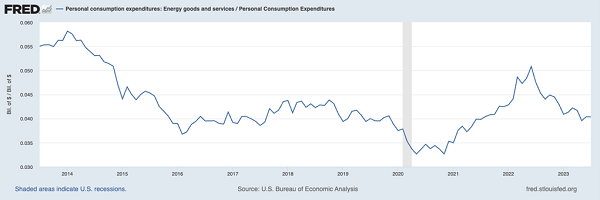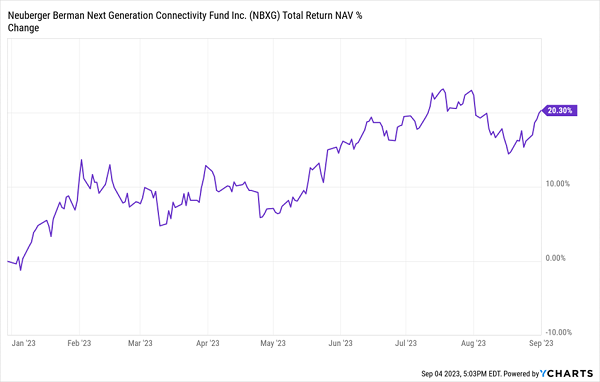If there’s one thing that stands out about the market for our favorite high-yield investments—closed-end funds (CEFs)—in 2023, it’s this: individual investors are still too skittish to jump in.
That’s our chance, because this “lag” means CEFs’ prices haven’t taken off, and these funds are throwing off dividend yields in the same neighborhood they were at the start of 2022—around 7.5%, on average, today. And by being just a little picky (as we will be with the fund talk about a bit further on), we can amp those payouts up to 10%+.
Combine that with the discounts to net asset value (NAV, or the value of CEFs’ portfolios) available across the space, and we’ve got a shot at real upside, especially when you consider how far behind the S&P 500 that CEFs have lagged this year.
Proprietary Index Shows Our CEF Opportunity

Source: CEF Insider
When we look at the CEF Insider Equity Sub-Index (a good proxy for stock-holding CEFs), we see that total returns for these funds are just 2% for 2023, a fraction of the S&P 500’s 18% or so as of this writing. Clearly, individual CEF investors are still sitting on the sidelines, nearly a year into the stock-market recovery.
Perhaps these folks are worried we’ve recovered too much. That’s understandable, but it’s off the mark. A lot of headlines about 2023’s strong year for stocks overlook the fact that the S&P 500 is still off all-time highs by about 6% or so.
In any event, individual investors’ skittishness is visible in the numbers, with mutual-fund inflows having just recently turned positive after several months of outflows last year and through the first half of 2023.
Fund Flows Turn Positive, but It’s Not Yet a Trend

It’s surprising, and really kind of silly, that investors have taken money out of stocks and stock funds in a year when the S&P 500 is up over 18%!
It begs the question of how stocks are rising if individual investors aren’t buying them. The answer is that hedge funds, investment banks and other large players have been getting there first because they know the fear of 2022 has caused a lag on investor money coming into the market.
And with CEFs, that inflow has lagged even longer, giving us our in. But it’s key to remember that this inflow is delayed, not terminated, making now a smart time to buy and lock in not only CEFs’ unusual discounts but their high yields, too.
So, what data is driving those big rich companies to front run everyday investors? Lower inflation, for one, which has reduced pressure on the Fed to further hike interest rates. A topping out and rolling over of rates would, of course, be good for stocks and CEFs.
At the same time, the US added more jobs than expected in August, and the unemployment rate rose because more people are returning to the labor force—a positive sign for productivity, spending and, in turn, stocks and stock-focused CEFs.
Lower inflation also frees up more money for consumers to choose what they spend on, which tends to encourage them to spend more. These days, for example, Americans are spending about as much on gas as they did before the pandemic, during the economically strong years of 2015 to 2019, and less than they spent in the early 2010s, before oil prices collapsed in 2014.
More Spending Power Freed Up

A CEF like the Neuberger Berman Next Generation Connectivity Fund (NBXG) is a good way to play this lagged demand for equity CEFs. To start, it offers a 10.9% dividend that’s found extra support from the fund’s NAV performance, which has gained 20% this year, nearly double the fund’s current yield.
NBXG’s Portfolio Gains Backstop Its Payout

The fund, as the name suggests, is tech-focused, and fast-growing companies like Palo Alto Networks (PANW), NVIDIA (NVDA) and Lattice Semiconductor (LSCC) are top holdings—and all are benefiting from the rapid growth of AI.
That tech portfolio might have you concerned that NBXG is overvalued, but, thanks to foot-dragging individual investors, we’ve got a chance to buy cheap—16.1% off cheap, to be exact: that’s the discount to NAV at which the fund trades now.
In other words, NBXG is one of the few places where you can buy NVIDIA shares for less than they trade for, and you get a 10.9% dividend, too. This is the kind of fund that investors can ignore for only so long—and when they come back aboard, that premium is likely to narrow, taking NBXG’s price with it.
It’s Not Just NBXG—Our Buy Window on These 4 BIG Dividends Is Open, Too
When it comes to CEFs, we demand big discounts and big dividends. And I’ve got 4 other CEFs I’m pounding the table on now, with dividends and discounts that will be shiny lures to income seekers as rates top out.
This quartet yields 9.5% between them and sport discounts so deep I see them primed for 20% price gains in the next 12 months.
I’m ready to share the details on all four of them with you now. Click here to learn more and get an opportunity to download a free Special Report naming all 4 of these cash-spinning funds, including their names, tickers, discounts and current yields.
